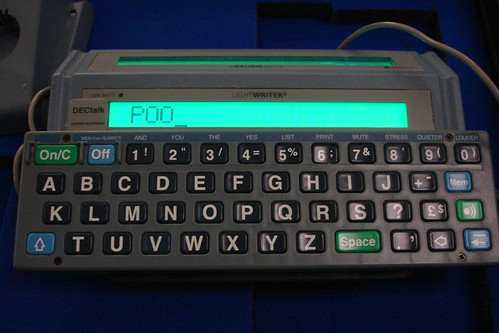 Mohammed Azharuddin, 17, got a distinction in his Class 10 Senior Secondary School exams. A visually-impaired student from a Marathi-medium school, Azharuddin is hoping to better his score in college because his screen-reader can now read aloud his Marathi notes. Called the
Mohammed Azharuddin, 17, got a distinction in his Class 10 Senior Secondary School exams. A visually-impaired student from a Marathi-medium school, Azharuddin is hoping to better his score in college because his screen-reader can now read aloud his Marathi notes. Called the
Text-To-Speech (TTS) synthesis system, this new software will hit the market in November. Sponsored by the Centre’s department of Information Technology, TTS is a screen-reading software application that identifies and interprets Indian language text being displayed on the screen. Unlike former screen-reading software such as Jobs Access With Speech (JAWS) that only reads English text on the screen, TTS can read Marathi, Tamil, Hindi, Telugu, Malayalam and Bengali.
Azharuddin is one of the 30 visually-impaired students who have been roped in for a month-long training workshop for the software by the developers — the Centre for Development of Advanced Computing (C-DAC) in Juhu.
“Before stepping into college, I will be prepared to make my own notes by researching from online websites and e-books in Marathi,” said Azharuddin. “Unlike the old software, the TTS system gives me instructions and commands in my own language and accent. Moreover, with this software, I will type out my own scripts for radio shows in the future,” added Azharuddin, an aspiring radio jockey.
“For the last two years we have been working on the software to ensure maximum comfort to users. From the native accent to the pace of the voice output, we have tried to steer away from mechanised voices that have been in use till now,” said Birchandra Singh, a linguist and project coordinator, C-DAC, Mumbai. “Once the workshop is completed, we will make note of the feedback from the students being trained and subsequently, refine it.”
Students are being trained by Harshad Jadhav, 28, who is visually-impaired himself. “The students, who are divided into batches of 10 each, attend the workshop for five days in a week. While commencing the workshop, I had to explain the very basics such as the parts of a computer,” said Jadhav, who underwent specialised training at the Indian Institute of Technology-Madras before taking class.
“We have progressed to Microsoft office. By the end of the six-week workshop, I’m hoping my students send mails in Marathi, read Marathi websites and e-papers,” he said. Jadhav also conducts weekly class tests to assess students’ performance.
The developers are also hoping to create a similar software for more than 22 regional languages by the end of next year. “We are hoping to record commands for languages such as Gujarati, Assamese, Oriya, Manipuri, Kannada and Bodo,” said Pawan Kumar, staff scientist, C-DAC, Mumbai. “We also aim to reach out to tiny pockets of the country by creating an android-based mobile software by 2012.”